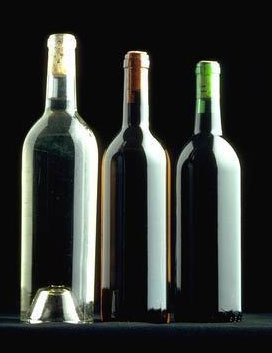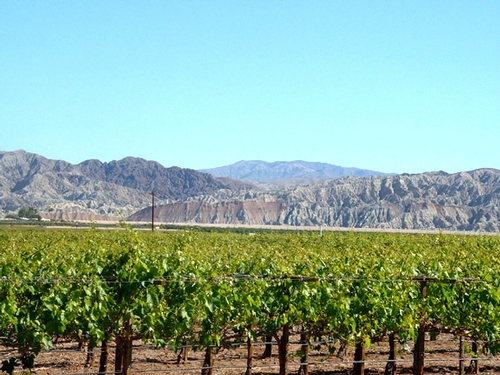Posts Tagged: wine
Associated Press profiles two Latino family wineries
Latino winemakers are rare, but some are finding success by catering to Latinos developing a taste for fine wine, according to an Associated Press article by Olivia Muñoz. The story ran in the Los Angeles Times, Bloomberg Businessweek, on the ABC News website and other media outlets.
The article profiled two Latino family wineries whose founders started out working in the fields.
"I would work my regular shift and then pester the vineyard manager with questions until I knew everything he knew," Reynoldo Robledo of the Robledo Family Winery near Sonoma was quoted.
The winery sells 20,000 cases per year bringing in about $1 million.
Ceja Vineyards in Napa president Amelia Ceja and her husband Armando worked in vineyards as children, and also obtained formal education. Armando earned a degree in enology and viticulture from UC Davis, and worked as a vineyard manager for other wineries before the family started their own, the story said.
Both vineyards were reported to be targeting the Latino market. Half of the Ceja Vineyard's wine club is Latino and the company promotes the wine at dinners pairing traditional Mexican dishes with Ceja Vineyard reds and whites. The Robledo Family Winery also built its business by catering in part to Latino wine drinkers interested in quality and a connection to their heritage.
Esau Herrera of the Hispanic Vintners Association, a marketing group with about a dozen members in California and Florida, told Muñoz that part of Latino vintners success comes from making a connection with Latinos.
"There are people like me who are very proud of our roots and don't mind plunking down $125 for a bottle of wine," Herrera was quoted.

wine
Shasta College teams with UCCE for winemaking class
A two-acre vineyard on the Shasta College campus will produce grapes for the school's growing wine-making program and a venue for collaboration with UC Cooperative Extension, according to an article in the Redding Record Searchlight.
Although the young vineyard is still about a year away from producing its first crop, the college is already working with UCCE to use the vineyard for research and community workshops.
“That’s been a good partnership,” Shasta College horticulture instructor Leimone Waite was quoted in the article. “We are trying to be a completely organic vineyard, which has been a real challenge.”
The vineyard is also used for instruction in some of Shasta College's 14 wine-related classes. Students plant, prune and train the grapevines. Some vines were purposely trained the wrong way so students can see what happens.
Shasta College is one of four in the 112-campus community college system to have a bonded winery. The designation allows the college to bottle wine with its own label. So far, Shasta College wine is not for sale, but it has been sampled at campus events.
The Shasta College's viticulture and enology program includes students seeking careers in the wine industry, as well as those who simply want to grow a few grapes and make wine at home.
Green winery begins making wine
Grape crush has begun at a new UC Davis winery that is intended to become self-sustaining in terms of energy and water, according to a UC Davis news release that ran in the Daily Democrat. The facility's environmentally friendly features include onsite solar power generation and a system for capturing rainwater and conserving processing water. The stored rainwater will be used for landscaping and toilets. "We want to demonstrate a self-sufficiency model that is applicable to any business with limited water," the article quoted Roger Boulton, a UC Davis winery-engineering expert. Plans call for eventually operating the facility independent of the main campus water line. The winery was also designed to capture carbon dioxide, a byproduct of fermentation, from a port in each of the new fermentors. "The goal is for the facility to be not just carbon neutral, but carbon zero, in terms of its carbon emissions," Boulton said. The 34,000-square-foot teaching-and-research complex is expected to be the first winery, brewery or food-processing facility to earn LEED Platinum certification, the highest environmental rating awarded by the U.S. Green Building Council. (LEED stands for Leadership in Energy and Environmental Design.) The facility will be only the third in the UC system to receive the LEED Platinum certification. The $20 million complex was funded entirely by private donations; no state or federal funds were used in its design or construction, the news release said.

Students work on the fall crush in the new winery.
Grapes put the squeeze on Riverside citrus
The value of Riverside County citrus crops dropped 25 percent in one year, from $135.7 million in 2008 to $101.6 million in 2009, according to an article in the Riverside Press-Enterprise. The story credits the growth of the wine industry in Temecula for the decline in citrus production.
A farmer told reporter Jeff Horseman it makes more sense to grow citrus in California's San Joaquin Valley, where land and water are cheaper, or to import the fruit from other countries - such as Mexico and South America - where fewer regulations cut into profits.
The story said Temecula's future is now tied to wine as county officials and vintners collaborate on a plan to make the Southern California wine country a premier tourist destination. UC Cooperative Extension staff research associate Tom Shea told the reporter that the popularity of agricultural crops can shift with time. He recollects farmers in Sonoma County grew apples and prunes decades ago, but the wine industry proved more profitable when restaurants and other tourism amenities were added. "I believe the official name of the 'appellation' is Temecula Valley Wine Country," Horseman e-mailed in reply to my question about the capitalization. "Technically, Wine Country lies outside the City of Temecula proper. However, it's common for folks around here to refer to the area as 'Temecula Wine Country' or even just 'Wine Country.'"

A Riverside County vineyard.
Wine demand expected to rise in US, fall worldwide
Within 20 years, 42,000 acres of new vines could be needed to meet growing U.S. wine consumption, Western Farm Press reported Jim Lapsley, UC Davis professor emeritus of ag economics, said at the “Outlook and Issues for the World Wine Market” symposium sponsored by the UC Agricultural Issues Center in late June.
But recently, cheaper wine imports have been spurring growers to replace grapevines with more profitable crops, notes reporter Harry Cline. In the Central Valley, wine grape plantings declined from 190,000 acres in 2001 to 157,000 in 2008.
“Using UC crop budgets, wine grapes are netting only $80 per acre compared to almonds at $200, walnuts at $1,070, pistachios at $860 and pomegranates at $620,” writes Cline.
“The supply of inexpensive wines from other countries acts as a ceiling on prices for wine grape growers,” Lapsley is quoted saying regarding San Joaquin Valley wine grapes.
Based on population/demographic trends and the falling wine consumption in Italy, France, Spain and Argentina, Dan Sumner, director of the University of California Agricultural Issues Center, expects world wine demand to decline despite projected consumption increases in the U.S., U.K. and Germany.
“World wine markets may still expand as incomes grow gradually in traditional markets and wine consumption is introduced in places with rapid population and income growth,” Sumner is quoted as saying.

